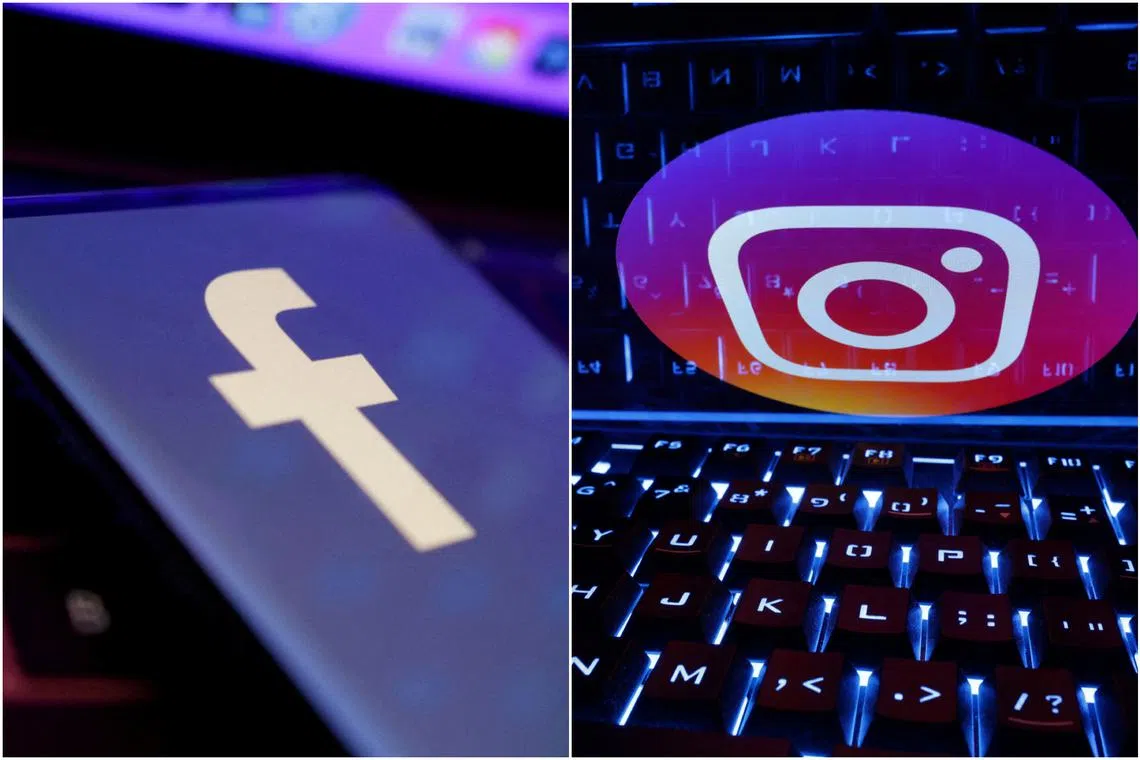Facebook, Instagram roll out paid subscription in Australia, New Zealand
Sign up now: Get ST's newsletters delivered to your inbox

The service will cost US$11.99 (S$16) on the Web and US$14.99 on the iOS and Android mobile platforms.
PHOTOS: REUTERS
Follow topic:
Sydney – Facebook and Instagram began a week-long roll-out of their first paid verification service on Friday, testing users’ willingness to pay for social media features that until now have been free.
Facing a drop in advertising revenues, parent company Meta is piloting a subscription
From Friday, subscribers in Australia who provide government-issued IDs can start applying for a verified badge, offering direct access to customer support, more visibility and protection against impersonation, according to the company.
“We will be gradually rolling out access to Meta Verified on Facebook and Instagram and expect to reach 100 per cent availability within the first seven days of the roll-out,” a Meta spokesman told AFP.
Some attempts to join Meta Verified from Sydney found that the service was not available on the first day of the roll-out.
“This new feature is about increasing authenticity and security across our services,” Meta chief executive Mark Zuckerberg wrote in a statement posted on Facebook and Instagram.
Crucially, the move also provides Meta with a way of mining more revenue from its two billion users.
The swelling army of creators, influencers and pseudo-celebrities who make a living online could be obvious users of verification, according to experts.
Many of them complain that it can be difficult to smooth technical and administrative problems, causing delays and lost revenue.
Dr Jonathon Hutchinson, a lecturer in online communication at the University of Sydney, said a kind of “VIP service” could be “quite a valuable proposition for a content creator”.
But ahead of the launch, ordinary users seemed less than keen to hand over money to a company that already makes vast sums from their data.
“I think most of my friends would laugh at it,” said Ms Ainsley Jade, a 35-year-old social media user in Sydney.
She sees a trend towards more casual use of social media and a shift away from a time when a user puts his “whole life” there.
“I think people are sort of moving away from that... but definitely, definitely would not pay for it – no way.”
Some commentators have expressed puzzlement as to why Facebook and Instagram would adopt a verification-subscription strategy that rival Twitter tried just weeks ago – with less than stellar results.
But Dr Hutchinson said Meta has often shown a willingness to try new, and at times risky, models, only to drop what does not work.
He sees this latest gambit as part of a broader effort to condition users to pay for social media.
“I think it is part of a slow-burning strategy to move towards a model that is not free, where more and more services and functionality will be a paid or subscription-based service,” he said.
“I think over the long-term, the functionality that we have now – joining groups, selling things on Marketplace – all of these add-ons that have emerged on Facebook over the years will eventually become subscription-based services.” AFP

